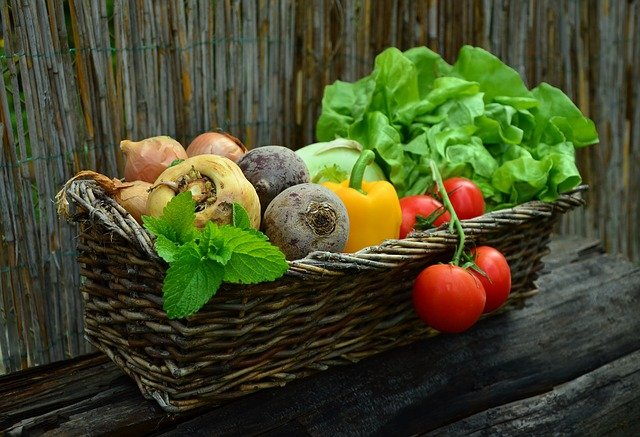Have you ever heard of the “Pegan” diet? It’s the unexpected combination of the meat-heavy paleo diet and vegan diet, which eschews all meat and animal products. Read on for how to successfully marry these two seemingly incompatible eating plans, the nutritional value of the pegan diet, and just exactly what foods are compliant.

All About Paleo
First up, it’s important to understand what exactly the paleo diet entails. According to the Mayo Clinic, “A paleo diet is a dietary plan based on foods similar to what might have been eaten during the Paleolithic era, which dates from approximately 2.5 million to 10,000 years ago”. The appeal of this diet plan is that it focuses on food that could be hunted and gathered, rather than the use of processed foods. So a person following a paleo diet would consume meats, fish, veggies, nuts, seeds, and fruit. Paleo limits the consumption of grains, legumes, sugar, and dairy. It can be an effective option for weight loss without counting calories and is a great way to get in the habit of meal planning. The paleo diet, short for Paleolithic, is sometimes called primal, caveman, or Stone Age diet.

bitt24/Shutterstock
Very Vegan
Veganism is based on avoiding consumption of anything from animals, including meat and dairy. Some vegans choose this lifestyle for moral reasons and others for health reasons. They primarily eat beans, grains, fruits, vegetables, nuts and seeds. For a more thorough examination of veganism, check out our article here.

Pegan Explained
What Is The Pegan Diet?
So what exactly is the pegan diet? It was introduced in 2015 by Dr. Mark Hyman, and combines the similarities of vegan and paleo, namely that they both focus on sustainably-raised, high quality, whole foods. Dr. Hyman suggests that this is the best of all eating plans since it combines the strengths of both the paleo diet and the vegan diet into a more moderate and healthy overall way of life.
Why Is Being Pegan Popular?
There’s a lot of variety in what pegans can eat, so there’s no getting bored of cooking the same things over and over. Additionally, there’s no strict calorie counting or obsessive weighing of food, just overall paying attention to the type and source of what one consumes. The focus on healthy foods and sustainability also make this an attractive eating plan and way of life.
What Can Pegans Eat?
So how exactly do you embrace a pegan lifestyle? There are a number of key factors. One should eat 75% plants, and avoid all dairy except the occasional goat or sheep’s dairy as a treat. It’s also vital to eat the right fats like nuts, avocados, and coconut oil while refraining from using vegetable oils (like sunflower, corn, soybean, and canola). Gluten should be nearly completely avoided, unless as a very rare indulgence. Pegans embrace lentils, but do not rely heavily on other starchy legumes as part of their diet. Also, meat is not usually used as a main course, rather as a small side dish or in sauces. All meat that is used is grass fed and sustainably-sourced. Overall, pegans believe this way of life makes the most sense for their health and the health of our planet.

Pegan Food List
Still not exactly sure what’s pegan compatible? Check out our list of pegan-approved foods, all readily available in your grocery store!
- eggs
- bison (grass fed)
- turkey (antibiotic free)
- salmon (low mercury, wild caught)
- nut milks
- chia seeds
- avocados
- radishes
- carrots
- strawberries
- grapefruit
- apples
- pears
- kiwis
- blueberries
- spinach
- eggplant (aubergine)
- cauliflower
- broccoli
- celery
- garlic
- sweet potatoes
- brown rice
- ezekiel bread
- squash
- honey
- maple syrup
Pegan Friendly Recipes
Interested in trying out the pegan approach to dieting? We’ve rounded up some of our favorite recipes from our site and the web to help start your journey! There are some breakfasts, lunches, dinners, snacks, and side dishes to get your pegan push off to a rip-roaring start!
